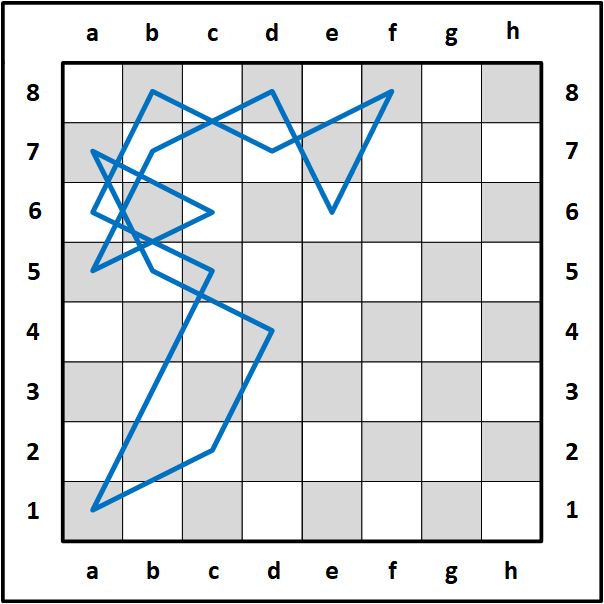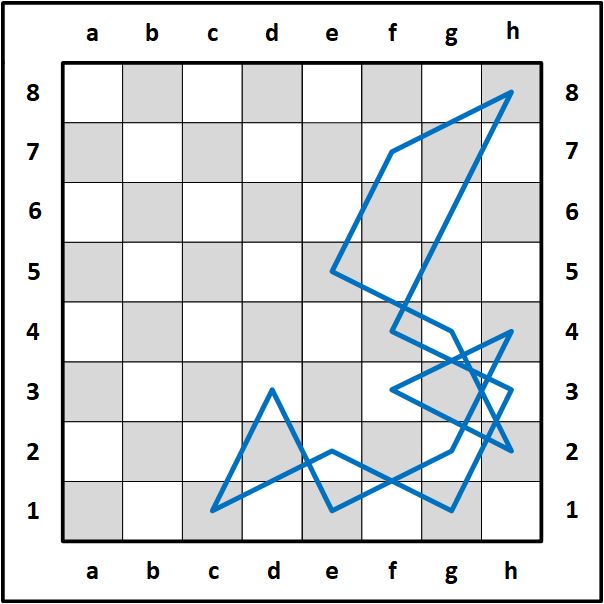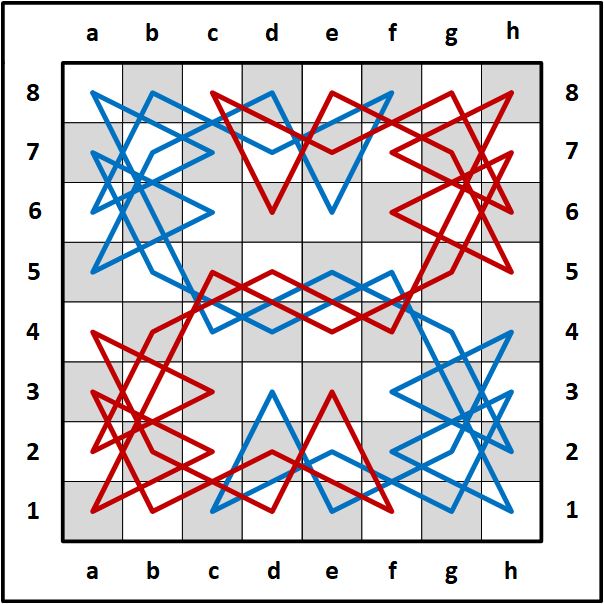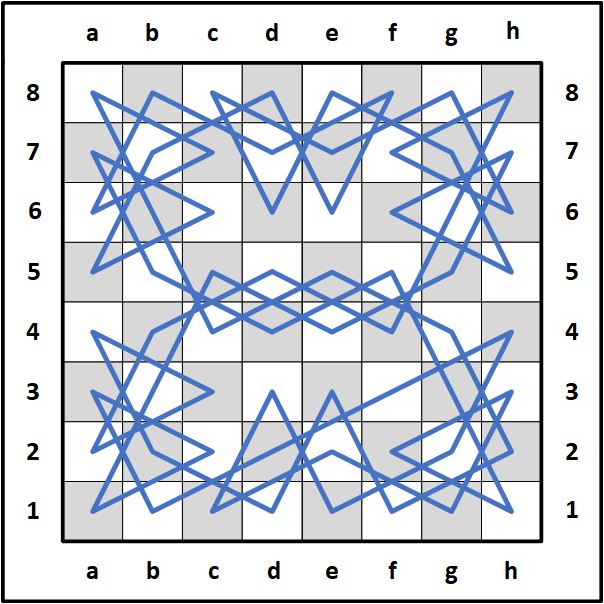Knight's Tour
Closed Construction II
While making designs on the chessboard with four mini-knight's tour closed circuits, I realized I could construct a complete closed knight's tour covering all 64 squares with one circuit. This knight's tour does not make a Latin Square nor is it semi-magic but is 180 degrees rotation symmetric. Check out the following steps I used in making the knight's tour.
Step 1:
I first made one complete circuit consisting of 16 moves then copied the circuit and flipped it horizontally to make the second circuit.
Step 2:
The third circuit was made by copying the circuit above and flipping it vertically. I duplicated that circuit and flipped it horizontally for the last circuit.
Step 3:
I combined all four mini-knight's tours on one board that ended up making a very nice symmetrical and geometric pattern.
Step 4:
After combining all four mini-knight's tours, I wanted to make a single 64 move closed knight's tour that is also 180 degrees rotation symmetric. I was able to do this by adding or replacing different colored lines to some of the knight's moves on the board. I used red, orange, yellow, green, lavender and aqua blue for the lines.
Step 5:
In this step, I moved the red lines (knight moves) to the orange lines, yellow to green, lavender to aqua blue then recolored all the lines in the tour back to blue. Here is the single closed 180 degrees rotation symmetric knight's tour.
Step 6:
After successfully making a single closed knight's tour circuit out of four mini-knight's tour circuits, I colored each original mini-knight's tour circuit patterns blue, red, green, and orange.
Step 7:
Here are the four mini-knight's tour circuits combined into one image and a single knight's tour circuit derived from the four mini-knight's tour circuits to make a 180 degrees rotation symmetric tour.
Step 8:
From the four mini-knight's tour circuits shown in Step 3 and Step 7 above, I was able to make a two circuit knight's tour and another single circuit tour. See both of them below. This time, i will let the viewer try to figure out how I derived at these tours by changing just a few moves from the original four mini-knight's tour shown above.











